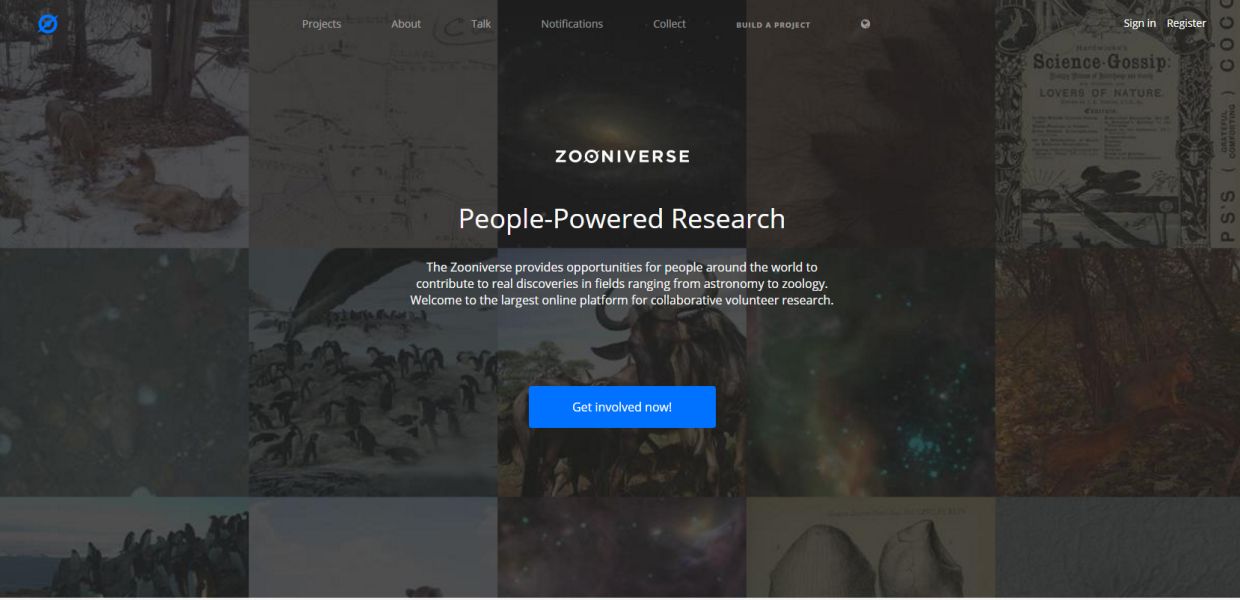Five Tips For Your Next Academic Crowdsourcing Project
This article by Marek Nicolic is the third in a three part series about crowdsourcing

Zooniverse sprung up from Galaxy Zoo, a project where people could sort photographs of galaxies; a task where large quantities of data that cannot be processed by computers, are offered to public. Project become so popular that it grew into Zooniverse - now one of largest and most popular citizen science platform.
As an intern at the University of Aberdeen, I had the chance to research and learn more about crowdsourcing. First popularised a decade ago, crowdsourcing is now widely recognised and used as a way for organisations to engage communities, complete large tasks on small budgets and to create buzz for their initiative. For universities, crowdsourcing has the potential to reduce research costs but so far its use has been limited.
Why is this? One reason is that, regardless of its benefits, crowdsourcing is also tied to a number of issues that need to be thought through before launching a campaign. Some of these issues are hard to work around in the university environment. In this article, I highlight some of these issues and offer tips for running a successful research-oriented crowdsourcing campaign.
1. Raise Awareness Within Your Institution
While some university departments and colleges are well-versed in online approaches, many more traditional departments have only just started to invest in technology. Often, where potential for public collections is large (e.g. art, history), knowledge about the possibility of crowdsourcing is scarce, or hidden behind other problems such as a lack of familiarity about how to use online platforms. The first step towards a successful crowdsourcing project is, therefore, to explain the concept to your peers and show them the tools which are available to help with your quest.
2. Identify How People Can Best Help
Not all tasks are suitable for crowdsourcing projects. It’s therefore important for researchers to identify a part of their research to which the general public could contribute. This should be something helpful but not too detailed or difficult to understand. If the work is too technical or sophisticated, there is a risk that the crowd will lose interest before they’ve even started.
3. Work Across Disciplines
Few disciplines could successfully launch a crowdsourcing platform on their own. By working across departments and with peers from other subject areas, it will be easier to gather the necessary computer skills, promotional tools and support of the public. This video looks at crowdsourcing in the arts and interdisciplinarity.
4. Identify Your Target Audience
For crowdsourcing, you need to find your target crowd. This means advertising, and perhaps even a big promotional campaign. Think about where to find the type of people you need to complete your work. The types of people who might be interested in sorting pictures of galaxies far away could, for example, be very different from those who enjoy transcribing historical restaurant menus.
5. Consider The Start-up Costs
The costs of crowdsourcing can vary hugely: some are free for researchers to use, while other platforms have high initial costs.
UCL’s project Transcribe Bentham, for example, invested approximately £50,000 over a period of years to create, launch and maintain their platform dedicated to transcribing unpublished manuscripts by British philosopher Jeremy Bentham. This figure included testing and revision during the design process to make it more user friendly. A more budget-friendly alternative to bespoke development is the CoCoCo platform, and there are surely other examples to be found online.
While considering the costs of crowdsourcing, remember that there would be a cost to adapting any platform to the specific needs of your project, as well as the cost of paying a couple of salaries. Crowdsourcing is not a cost-free solution to carrying out your research but it can be a way to do low-cost research at a time when demand for grants is high.
Is the effort worth it?
By the time you’ve identified a job for the public, created a platform, found your crowd and nurtured them, you will have invested a considerable amount of time and probably also money. This leaves fewer resources to do your research.
And if you have great success in attracting volunteers, you may find those volunteers are not as effective as you would like. Too many volunteers can also put great pressure on staff, who have to liaise with and help those volunteers.
The previously mentioned Transcribe Bentham is a case in point. When it launched in 2010, their great social media campaign attracted the attention of mainstream media (newspapers), which in turn attracted lots of volunteers. However early reports suggested these volunteers did not produce work of a very high quality.
As David Weinberger observed:
'[For the first period of the project] … the results of the [crowdfunding] project cannot be encouraging for those looking for a pragmatic way to generate high-quality transcriptions rapidly. (David Weinberger, ‘Crowdsourcing Transcription: Too Big To Know' (last accessed 1 January 2016)).
So is it worthwhile leaving your research to focus on getting the crowd to do your work?
The good news is that, like other open source projects (e.g. Wikipedia, Zooniverse), Transcribe Bentham’s track record improved over time, as it found ‘supervolunteers’ who became very skilled in their work. The project is currently generating a large number of high quality transcriptions, with only four staff working on a less than part time basis. The take-home message here is that Transcribe Bentham is now achieving much higher numbers of transcriptions than if it had hired staff for the same cost.
All in all crowdsourcing is a great opportunity in many areas, and perhaps the only chance for many researchers to access the valuable knowledge held by the public. Encouraging awareness about and creating channels for crowdsourcing, creates pressure on universities to develop ways to accommodate it. Through this, academics will be able to engage far more closely with the public.
